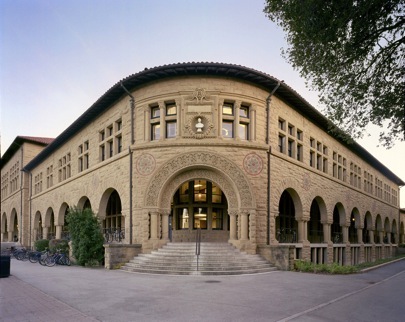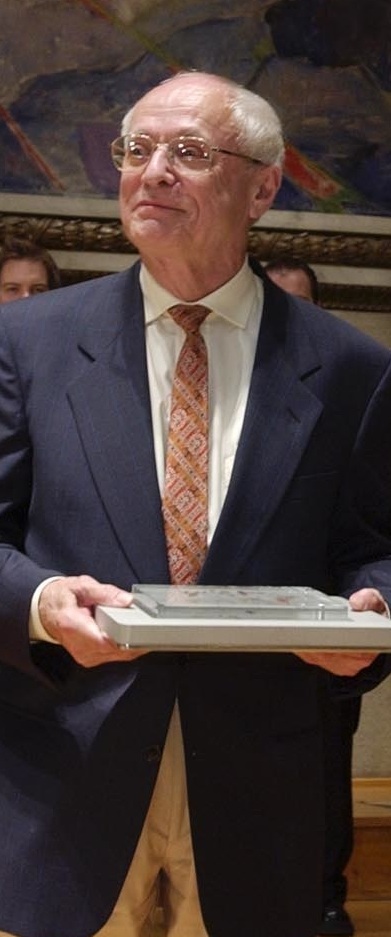(The notes for this course are here.)
In these days the angel of topology and the devil of abstract algebra fight for the soul of every individual discipline of mathematics.
— Hermann Weyl, 1939
There are several types of courses that can go under the name of “introduction to algebraic geometry”: complex geometry; the theory of varieties; a non-rigorous examples-based course; algebraic geometry for number theorists (perhaps focusing on elliptic curves); and more. There is a place for each of these courses. This course will deal with schemes, and will attempt to be faster and more complete and rigorous than most, but with enough examples and calculations to help develop intuition for the machinery. Such a course is normally a “second course” in algebraic geometry, and in an ideal world, people would learn this material over many years. We do not live in an ideal world.
This course is for mathematicians intending to get near the boundary of current research, in algebraic geometry or a related part of mathematics. It is not intended for undergraduates or people in other fields; for that, people should wait for a later incarnation of Math 216 (which will vary in style over the years).
In short, this not a course to take casually. But if you have the interest and time and energy, I will do my best to make this rewarding.
Zhiyuan Li did a great job teaching the first quarter of the three-quarter sequence (216A) in the fall; for his course webpage, click here.
Email list: I will have a class email list that I’ll use occasionally, to let you know about things like changed class times and problem set corrections. I’ll begin it on the first day of class. If you are on the list and want to be off it, or vice versa, please let me know.
Time and place (spring quarter): 9:00-10:30 in 381-T on most Mondays and Wednesdays, and some Fridays (see below for more).
Office hours: Because of the nature of this class, I’d like to be as open as possible about office hours, and not have them restricted to a few hours per week. So if you would like to chat, please let me know, and I’ll be most likely happy to meet on a couple of days’ notice. I am almost always available to meet immediately after class. If people are shy about chatting, I may turn the third “class period” each week into office hours.
References:
- The notes based on earlier versions of this class, and on many useful comments from people around the world, are available here. They will be updated throughout the year. I would very much like comments, suggestions, and corrections.
- Johan de Jong’s stacks project has in my mind become essentially the universal reference for algebraic geometry, and becoming more so with every edit. It is free, comprehensive, well-written, philosophically well thought through, searchable, and (important for a reference) modular (when you look something up, you can read “around it” to understand the proof).
- Other more “text-like” references: It may be useful having Hartshorne’s Algebraic Geometry, and possibly Mumford’s Red Book of Varieties and Schemes (the first edition is better, as Springer introduced errors into the second edition by retyping it). Mumford’s second edition is available online (with a Stanford account) from Springer.
- For background on commutative algebra, I’d suggest consulting Eisenbud’s Commutative Algebra with a View toward Algebraic Geometry or Atiyah and MacDonald’s Commutative Algebra.
- For background on abstract nonsense, Weibel’s Introduction to Homological Algebra is good to have handy. Freyd’s Abelian Categories is available online (free and legally) here.
Homework:
You can wave your hands all you want, but it still won’t make you fly.
— Mark Kisin
Unlike most advanced graduate courses, there will be homework. It is important — this material is very dense, and the only way to understand it is to grapple with it at close range. There will be a problem set most weeks. Your grade will depend on the problem sets.
Winter quarter (216B)
Monday, January 6: 11.1-11.2.2. Welcome; dimension and codimension. Discussion of “dimension = transcendence degree”.
Wednesday, January 8: 11.2-11.3.8. Noether normalization. Krull’s Principal Ideal Theorem and Height Theorem.
Monday, January 13: 11.3.10-11.4. Algebraic Hartogs’s Lemma. Behaviour of dimensions of fibers of morphisms of varieties.
Wednesday, January 15: Chapter 12 up to 12.2.11. The Zariski tangent space (motivation, definition, properties). Dimension of the tangent space bounds dimension of X. Regular local rings. Smoothness over a field. Regularity vs. Smoothness, and the statement of the Smoothness-Regularity Comparison Theorem.
Monday, January 20: no class (MLK day).
Wednesday, January 22: 12.2.12-12.4. Regular local rings are integral domains. Affine space over a field is regular. Examples. Bertini’s Theorem.
Friday, January 24: 12.5-6, 12.8-9. Discrete valuation rings (things to focus on); geometry of Noetherian normal schemes; first definition of smooth (and etale) morphisms; facts worth hearing about regular local rings; a touch about the Artin-Rees Lemma.
Monday, January 27 and Wednesday, January 29: 13.1-6. Vector bundles and locally free sheaves; quasicoherent sheaves; an important characterization of quasicoherent sheaves (among O-modules) in terms of the distinguished affine base; quasicoherent sheaves form an abelian category; module-like constructions; finite type and coherent sheaves.
Monday, February 3: 13.7, 14.1, start of 14.2. Why we like finite type and coherent sheaves. Some line bundles on projective space. Divisors, and the “div” map from isomorphis classes of line bundles with nonzero rational section. Problem set 1 out.
Wednesday, February 5: 14.2. Line bundles and Weil divisors.
Friday, February 7 (one of the occasional Fridays!): 15, 16.1-2. Line bundles on projective schemes. Global generation and base point freeness. Pushforwards of quasicoherent sheaves (by qcqs morphisms).
Friday, February 14 (special Valentine’s class): 16.3-16.5. Pullbacks of quasicoherent sheaves (3 “definitions”; properties); line bundles and maps to projective space; the Curve-to-Projective Extension Theorem.
Monday, February 17: no class (President’s Day) .
Wednesday, February 19: 16.6, 17.1. Very ampleness and ampleness. The equivalence of the five definitions of ampleness. Relative Spec (universal property and construction).
Thursday, February 20, noon: Problem Set 1 due.
Friday, February 21 (one of the occasional Fridays!): 17.2,-17.4.3. Relative Proj; projective morphisms; applications to curves.
Monday, February 24: 17.4.4-18.2. Degree of projective morphism from curve to regular curve. Properties and definition of (Cech) cohomology (of a quasicoherent sheaf on a quasicompact separated scheme).
Wednesday, February 26: 18.3-18.5. Problem Set 2 out. More cohomology; Riemann-Roch, degrees of coherent sheaves, arithmetic genus, Serre duality.
Friday, February 28: 18.6-18.9. Hilbert polynomials and why we care. Higher pushforward (or direct image) sheaves, and their properties. A few words on Grothendieck’s Coherence Theorem (higher pushforwards of coherent sheaves by proper morphisms of Noetherian schemes are also coherent).
Friday, March 7: 19.1-19.5. Some key facts we’ll use. Curves of genus 0. Fun classical consequences. Hyperelliptic curves.
Monday, March 10 and Wednesday, March 12: rest of chapter 19. Curves of genus 2, 3, 4, 5; great fun with elliptic curves. End of course!
Thursday, March 13: Problem Set 2 due.
Spring quarter (216C, in 381-T; 8:30-10 starting Mon. Apr. 14)
If you did not come to the winter quarter, and are coming to the spring quarter, please let me know, in part so I can add you to the email list.
Office hours: Mondays and Friday 11-12, and also by appointment. (Note: if at 11:30, it appears that no one is coming, I may take care of errands around the department. If you might come after 11:30 one day, just let me know in advance and I’ll be sure to be in.
Tentative dates of classes:
Problem Set C1 out.
Monday, April 7: 21.1-21.2.11. Motivation for differentials. A first definition in the affine case. The cotangent exact sequence (affine case).
Wednesday, April 9: 21.2.11-21.2.M. The universal property of differentials. More facts about differentials. The normal module/bundle/sheaf.
Friday, April 11: 21.2.20-21.3. Global definition of differentials. More facts.
Monday, April 14 21.4-21.7.2. Using differentials to actually do things in examples; unramified morphisms; towards Riemann-Hurwitz. Problem Set C2 out.
Tuesday, April 15: Problem Set C1 due.
Wednesday, April 16: 21.7-23.3. Riemann-Hurwitz. Derived functors.
Friday, April 18: 23.4-24.2. Derived functor cohomology of O-modules, and why it agrees with Cech cohomology. Some easier facts about flatness.
Monday, April 21: 24.2-24.4. More “easier” flatness facts. Flatness facts using Tor. Ideal-theoretic flatness criteria.
Tuesday, April 22: Problem Set C2 due.
Wednesday, April 23: 24.5 and 24.7. Topological aspects of flatness; flatness implies constant Euler characteristic.
Friday, April 25: 24.6, 25.1-2: Local criteria for flatness and consequences (including a redefinition of smoothness and etaleness, and the fact that smooth varieties are regular). No office hours.
Monday, April 28: 25.3, 26.2.E. Generic smoothness theorems (including Kleiman-Bertini), depth, Cohen-Macaulayness. Problem Set C3 out.
Wednesday, April 29: 28.1-2. Digesting depth and Cohen-Macaulayness. Statement and applications of cohomology and base change theorems.
Friday, May 2: 28.2. Mumford’s trick, proof of Semicontinuity Theorem, key ideas in proof of Grauert and Cohomology and Base Change Theorems.
Monday, May 5: 16.7, 28.3, 29.1-3. Representability of moduli problems: the Grassmannian (two versions), hypersurfaces, and some discussion of the Hilbert scheme. Completions: basic properties, completions and exactness, types of singularities.
Tuesday, May 6: Problem Set C3 due.
Wednesday, May 7: 30.1-2. Toward the proof of Serre duality. Statement of various versions of Serre duality (for vector bundles, for Hom, for Ext), each in two versions (functorial version, trace version). Both versions of Serre duality hold for projective space. Ext and sheaf Ext.
Friday, May 9: 30.3. Proof of various forms of Serre duality.
Monday, May 12. No class or office hours (Ph.D. defense).
Wednesday, May 14. No class (returning from Yale).
Friday, May 16. No class.
Monday, May 19 and Wednesday, May 21: 30.4. Serre duality and the derived category. The adjunction formula. The canonical bundle is dualizing.
Friday, May 23: 29.4-6. The Theorem of Formal Functions, Stein Factorization, Zariski’s Main Theorem (Grothendieck’s form), and applications. (The proof of the Theorem of Formal Functions is relegated to the notes (end of chapter 29), and the proof of Zariski’s Main Theorem will be given next time.
Monday, May 26. No class (Memorial Day).
Wednesday, May 28: 29.6. Proof of Zariski’s Main Theorem. Castelnuovo’s Criterion.
Friday, May 30. The etale topology. Sheaves in this context. Etale cohomology.
Monday, June 2. Last class: more on the etale topology. Descent. Introduction to the Weil conjectures.
Wednesday, June 4. Go to Bytes and celebrate.



Leave a comment